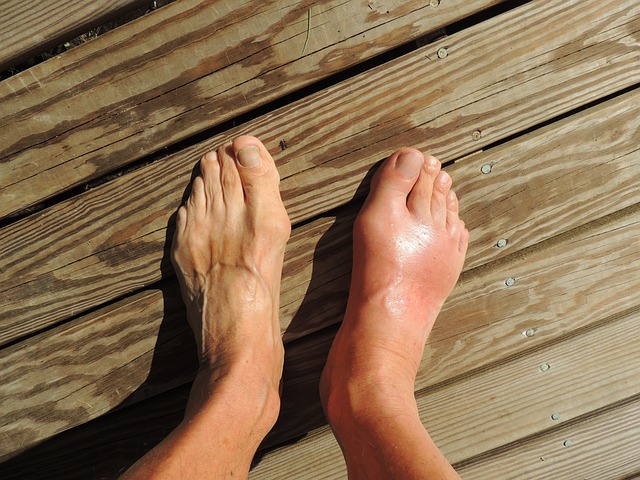Living with pavatalgia (podalgia) typically doesn’t have a direct impact on your life expectancy. However, the duration and impact of the condition depend on several factors, including the cause of the pain, the severity of symptoms, and the treatment received. Let’s break down the key considerations:
1. Severity and Progression of Symptoms
The course of pavatalgia (podalgia) can vary. For some people, foot pain is mild and can be managed with conservative treatments, allowing them to live normal, active lives. For others, the pain may be chronic or progressively worsen, which could affect their ability to walk, stand, or perform everyday tasks.
For example:
- Mild Cases: If pavatalgia is caused by something like a minor strain, it may resolve relatively quickly with rest and self-care measures. With proper treatment, people can return to normal activity within a few weeks or months.
- Chronic Cases: In conditions like plantar fasciitis or arthritis, foot pain may persist over time and require long-term management. While this won’t directly affect life expectancy, it could impact one’s mobility and overall quality of life.
- Progressive Cases: If pavatalgia is caused by more serious conditions such as nerve damage from diabetes or severe osteoarthritis, it may worsen over time, leading to increased pain and potentially affecting overall function.
2. Underlying Medical Conditions
In many cases, pavatalgia is not just a standalone condition; it can be a symptom of a broader underlying health issue. For instance:
- Diabetes: If pavatalgia (podalgia) is a result of diabetic neuropathy (nerve damage caused by high blood sugar), the primary concern becomes managing the diabetes itself. Poorly controlled diabetes can lead to serious complications such as infections, ulcers, and even amputations, all of which can significantly impact a person’s lifespan.
- Arthritis: In cases of rheumatoid arthritis or osteoarthritis, pavatalgia may be accompanied by joint damage, inflammation, and reduced mobility. While these conditions may not directly shorten lifespan, their effects on the body can decrease one’s ability to perform daily tasks.
- Vascular Diseases: Conditions like peripheral artery disease (PAD) can cause foot pain due to poor circulation. If left untreated, PAD can lead to more severe complications, including limb amputation, which can indirectly affect longevity.
Managing these underlying conditions through medical treatment, lifestyle changes, and regular monitoring can help reduce the severity of pavatalgia (podalgia) and prevent it from progressing to more serious complications.
3. Treatment and Management
The ability to manage and treat pavatalgia effectively plays a major role in how long a person can live with the condition while maintaining a good quality of life. Many people live for years with foot pain by using a combination of treatments, including:
- Rest and Foot Elevation: Allowing the foot to rest and reducing activity can give it time to heal and decrease inflammation.
- Ice Therapy: Applying ice to the affected area can help reduce swelling and provide temporary pain relief.
- Proper Footwear: Wearing supportive shoes or using orthotic insoles can reduce pressure on painful areas of the foot, easing discomfort.
- Physical Therapy: Exercises to stretch and strengthen the muscles and tendons in the feet can help alleviate pain from conditions like plantar fasciitis and Achilles tendonitis.
- Medications: Over-the-counter pain relievers, such as NSAIDs, can help manage pain and inflammation. In some cases, stronger medications or corticosteroid injections may be needed.
- Surgical Options: In severe cases where conservative treatments fail, surgery may be required to correct structural issues like bunions, fractures, or nerve damage.
With early diagnosis, proper treatment, and ongoing management, most individuals can lead an active life despite having pavatalgia (podalgia).
4. Lifestyle Adjustments
Making lifestyle changes can help prevent pavatalgia from worsening and may even reduce the frequency of flare-ups. For instance:
- Maintaining a Healthy Weight: Excess weight places additional stress on the feet, increasing the risk of developing or aggravating podalgia.
- Staying Active: Low-impact exercises like swimming or cycling can help maintain mobility without putting excessive strain on the feet.
- Regular Foot Care: Keeping feet clean, moisturized, and free of injuries can help prevent infections and complications.
Adopting these lifestyle habits can support overall health and reduce the risk of podalgia worsening over time.
Conclusion
Living with pavatalgia is not life-threatening, and many individuals can manage the condition for years with proper treatment and lifestyle adjustments. While pavatalgia itself does not typically impact life expectancy, it can affect quality of life if not managed properly. The duration and severity of the condition depend on factors like the underlying cause, the effectiveness of treatments, and overall health management.
If you are experiencing persistent or severe foot pain, it’s important to seek medical attention to identify the cause and explore appropriate treatment options. With the right care, many people can live long and active lives, even with pavatalgia, without it severely limiting their overall well-being.

